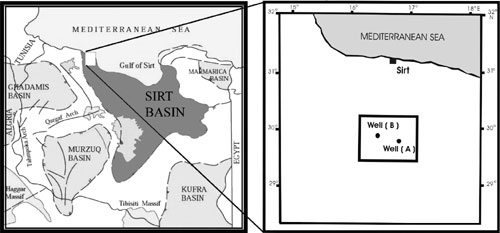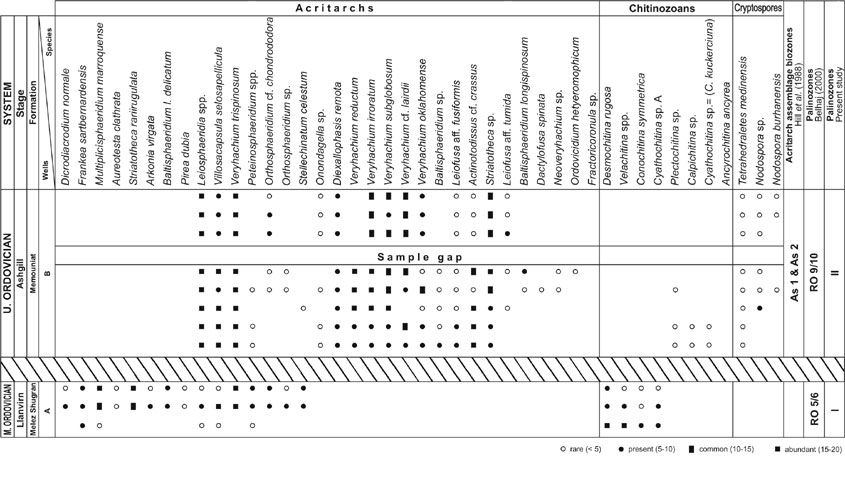
Palynostratigraphy and paleoenvironmental study of Middle and Upper Ordovician sequences in NW Sirt Basin, Libya
Faisal Abuhmida1 and Abuagila El Harbi1
1 Petroleum Research Center, Exploration Department, P.O.Box 6431 Tripoli, Libya. E–mails: abuhmida@hotmail.com / harbi64@yahoo.com
Key words: Palynostratigraphy. Paleoenvironments. Ordovician. Sirt Basin. Libya.
Conventional core samples from subsurface sequences of the Memouniat and Melez Shugran formations were studied. They were recovered from two wells drilled in north-west Sirt basin, Libya, between 15° 30’ 00’’, 17° 00’ 00’’ E longitude and 29° 45’ 02’’, 30° 50’ 03’’ N latitude (Figure 1). These samples yielded a well-preserved and diverse marine assemblage of palynomorphs (acritachs and chitinozoans), and well-preserved non marine palynomorphs (cryptospores). 43 palynomorph species with stratigraphic value have been identified; i.e, 32 acritarch species, 8 chitinozoan species, and 3 cryptospore species. Two palynological zones have been identified: Zone I, Llanvirn in age, and Zone II, Ashgill in age, based on acritarchs and chitinozoans (Figure 2). Correlation of these palynozones with local biozones previously described in the Ghadames and Sirt basins has been attempted. On the base of palynomorph proportion analysis, the depositional environment is interpreted as an open-marine shelf.

Figure 1. Location map of the study area.

Figure 2. Stratigraphic range chart of the most characteristic Middle–Upper Ordovician acritarchs, chitinozoans and cryptospores in studied wells.
Received: February 15, 2003
Accepted: June 15, 2003